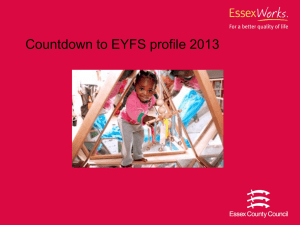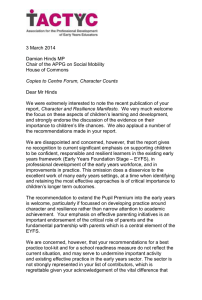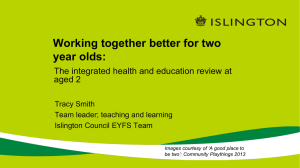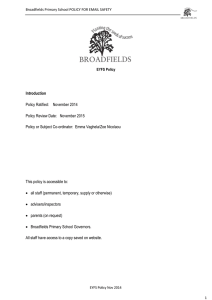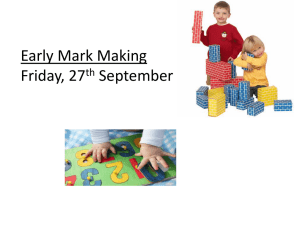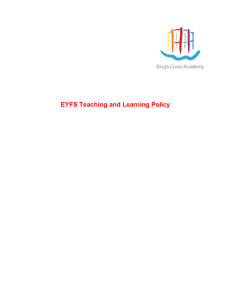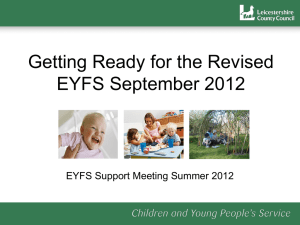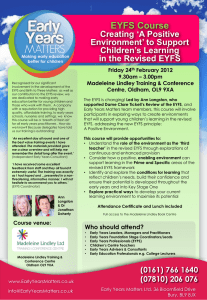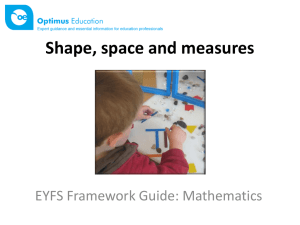Personal social and emotional development: PSED
advertisement
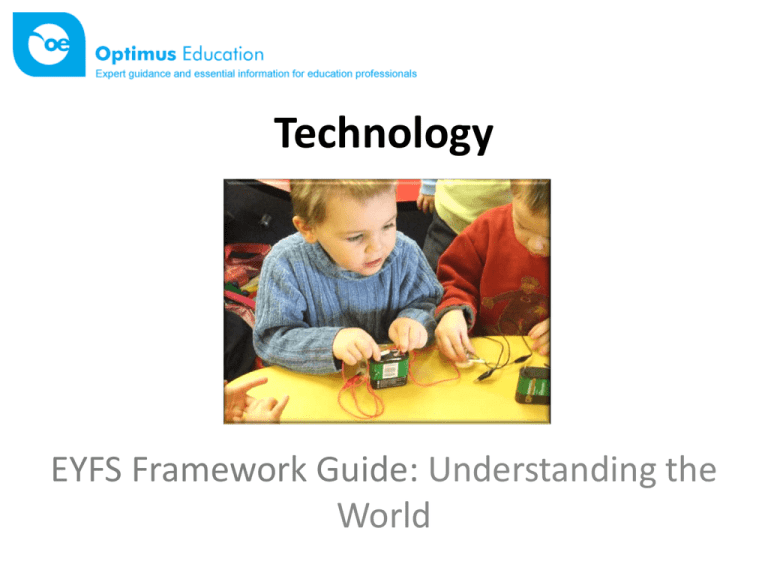
Technology EYFS Framework Guide: Understanding the World What is Understanding the World? In the EYFS framework, Understanding the World (UW) is one of the four specific areas of learning. It involves guiding children to make sense of their physical world and their community through opportunities to explore, observe and find out about people, places, technology and the environment. Three aspects of Understanding the World in the EYFS People and communities The world Technology Helping children to learn about technology ‘Understanding the World’ covers most aspects of the area of learning and development which was called ‘Knowledge and Understanding of the World’ in the original EYFS framework. Technology covers the previous aspect of ‘ICT’ and parts of ‘Designing and Making’. It helps children recognise that a range of technology is used in places such as homes and schools. Practitioners should support children in experiencing a range of technologies- using cameras, photocopiers, CD players, tape recorders and programmable toys in addition to computers. How can we support young children to learn about technology? Attitudes and ethos The physical environment Links to the prime areas of learning Supporting different ways of learning Building partnerships with parents Our attitudes and ethos • Are all practitioners competent themselves in using modern technology? • If not, how can those members of staff who are technologically confident and competent help them to develop their skills? • Are all practitioners confident in their understanding of how information and communication technology (ICT) and design technology can be used to support the fascinations and interests of the very youngest children in our setting? • Do all staff enthusiastically share their technological knowledge with children, modelling what they are able to do? • Do all practitioners working with the older children feel sufficiently ‘technologically competent’ to support and extend the children’s learning and development in this area? Physical environment • Does the environment of our setting make good use of technology to change the mood during the day – by using music or lighting effects? • Have we provided a wide range of resources for the youngest children – including toys, books, puzzles and games – which involve mechanical movements and functions, such as buttons, flaps, fastenings and toys or everyday objects which move or make a sound in different ways? • Can we provide a dark corner or a dark den where the children can use battery driven and wind-up torches, fibre optic torches and rope lights to discover more about technology and the scientific world around them? • Have we introduced a wide range of technological equipment and resources to support children at different levels in their learning and development in this area? Links to the prime areas of learning • Do the children have independent access to CD players, a small range of electronic toys, a light box or overhead projector to foster their interest in how things work and what they do as well as supporting the other areas of learning and development in the EYFS? • How often do we send time talking to the children about how to use the technological resources and equipment safely? • Have we introduced programmable toys to support the other areas of learning and development? • How well do we help children develop their skills in accessing information from the internet and using technology to communicate with others. Supporting different ways of learning • Can we identify which children show a deep interest in how things work and how they can be controlled? • How well do we support and extend these interests? • How do we engage those children who do not show a natural interest in the technological aspects of the resources we provide? • Do we use our own and the children’s skills to document their learning and development in order to share it with the children’s families? Building partnerships with parents • Do practitioners talk to the children’s family members to discover how competent their children are at using technology? • How do we explain to all parents the positive effects of their children becoming familiar with everyday technology from a very young age? • Can we harness the interests of parents in technology to support our provision of ICT and design technology in our setting? • Are we sufficiently confident to encourage the children to use sophisticated means of recording what they are doing – using digital cameras, videos and web cameras – to show their parents and carers the things which are of great importance to them in the course of the day?
